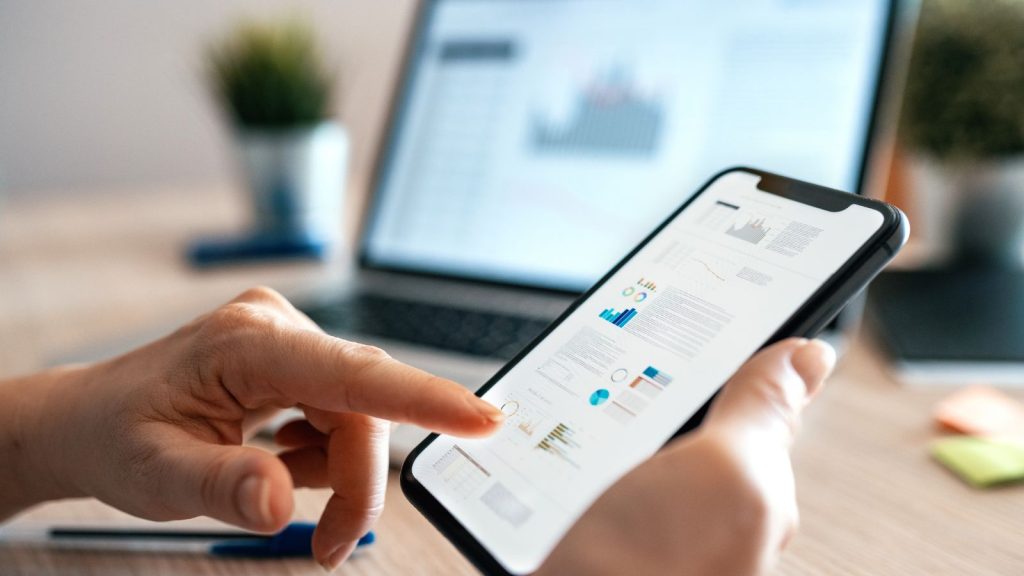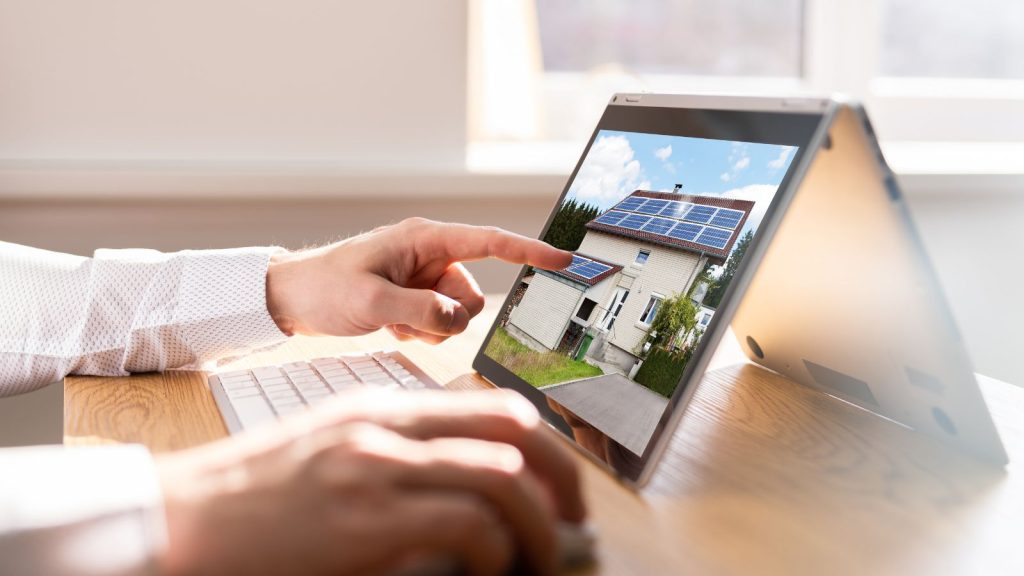
1. Established B2B marketing practice won’t suffer from expanding mobile use.
Mobile device usage among U.S. adults has exploded from about 20 minutes per day in 2008 to 3.6 hours per day in 2018. But, it’s critical to note this growth has occurred on top of laptop and desktop usage, not at the expense of either.
Laptop and desktop usage rates have only declined slightly, from a high of 2.6 hours per day in 2011 to 2 hours per day in 2018.
Implication: B2B customers are far less likely to make purchases with a phone than with a laptop or desktop computer. This means established B2B marketing practices are not being negatively effected by the expansion of mobile.
Nor are they likely to be in the near future, as the only other platforms with expanding usage are game consoles and other OTT devices like Apple TVs and Amazon Fire sticks (source).
How many B2B product managers do you know who sell on Xbox?
2. The re-emergence of brick and mortar is no threat to eCommerce whatsoever.
As a percentage of total retail sales in the U.S., eCommerce has gone from less than 2% in 2000 to over 15% in the first quarter of 2019. The only decline over that entire period took place in 2008.
Implication: recent articles like this and this hype the re-emergence of brick and mortar retail as part of retail’s inevitably diversified future. But they fail to acknowledge at least 2 critical points:
- Money is money: If you’re already selling on Amazon, do you care whether customers buy your products online or in one of their new stores? If anything, this will be good for your business.
- Size matters: The amount of retail stores predicted to open in the next five years is dwarfed by the downfall of a wide variety of major brands from Sears to Radioshack to CVS (source). Toys ‘R’ Us alone was operating over 800 stores less than 1 year ago (source).
3. Product integration and association will drive your sales.
- 88% of Americans report using a second device while watching TV
- 71% use that device to look up content related to what they’re watching on TV
Implication: if 88% of Americans are using their phones to look up information about what they’re seeing on TV, your products need to be positioned in combination to maximize reach and sales results.
Think about the enrichment of your product pages and the amount of images you offer for each. Are you showing every angle and every feature? Are you providing close up shots?
Placing products in context and highlighting their practical association with other products is critical for maximizing conversions.
4. Word of mouth is the key to expanding market share.
41% of Americans currently use a device to send messages about television content to friends and family, specifically while they’re watching TV. These individuals generate wider interest in your products by telling their friends and family members about your brand.
This finding is bolstered by the fact that a 2017 poll found that at 23%, the largest portion of individuals signing up for new online services had done so on the recommendation of another.
Implication 1: People search differently on mobile than they do on desktop/laptop computers, so optimizing your product pages to rank high for mobile search is a skill you must master.
2 points to think about:
- Mobile users often search by voice, using full questions.
- Questions address different kinds of information: do they want to buy right away or do they want to know more first?
Implication 2: in the same 2017 poll, financial incentive accounted for only 22% of new service sign-ups and only 12% even reported liking the product.
Because this poll shows word of mouth has the potential to play a bigger role in driving eCommerce decisions than cost or preference, marketing needs to focus on building customer trust and maintaining authenticity.
People want to buy products packaged as authentic experiences they can share on social media.
5. You need to be selling in India and China today.
India
- 1.34 billion total population
- accounts for 12% of global Internet use
- approx. 900 million did not use the Internet in 2015
China
- 1.39 billion total population
- accounts for 21% of global Internet use
- approx. 640 million did not use the Internet in 2018 (source)
And a staggering 98% of Chinese on the Internet access it with a phone.
Implication: eCommerce operations already operating in these countries are poised to take advantage of the fact that both hold massive untapped markets. And these are countries that have already made enormous commitments to drive provision of Internet service.
Indians already trust Amazon more than any other Internet brand (source), and the Indian government is working to provide Internet service to everyone in the country by 2022 (source).
Are you selling in the Indian and Chinese markets? Are your product pages optimized for them? If not, what are you waiting for?
6. Content must be tailored and dynamic to maximize conversions.
89% of North Americans regularly use the Internet and in 2019 Americans will spend an average of 266 minutes on their phones, but only 216 watching television.
Implication: if your ads and content aren’t optimized for mobile devices and tailored for your potential customers to find them in the spaces they utilize, you won’t sell to them.
For example, Alexa Skills are like apps for an Amazon Echo that can be triggered by speaking a key phrase. Nearly 100,000 Alexa Skills are currently available for download.
This new vocal channel provides an opportunity to answer specific questions directly with a product offer.
Stats to think about:
- 1.244 bil. – number of Android phones sold in 2017 (source)
- 2.1 mil. – number of currently available Android apps (source)
- 215.8 mil. – number of iPhones sold in 2017 (source)
- 1.8 mil. – number of apps in Apple’s App Store (source)
- 100 mil. – number of Alexa devices sold to date (source)
Simple math tells us the room for growth in the total number of Alexa Skills apps is massive. Getting ahead of this trend immediately virtually ensures increasing sales and larger market share.

7. Grab your competition’s market share by cornering the wearable device channel.
Between 2014 and 2018, the number of Americans wearing electronic devices embedded in clothes or accessories more than doubled, from 25 to 52 million. And it’s estimated Apple has sold 46 million watches since the 2015 launch (source), including 10.4 million just in Q4 of 2018 (source).
Implication 1: This should be obvious, but pairing your products with wearable devices in product page photographs is an easy way to speak to customers.
Your products don’t even need to relate to wearable devices, as customers will still notice the combination.
Implication 2: Wearable devices offer an incredible opportunity for collecting information that can be used to sharpen buyer personas and content offers.
Only when you know what your customers are doing, do you really know who they are, so you can speak directly to them.
Implication 3: This new channel allows for delivery of information, but not if your content isn’t tailored for the space.
When it comes to the tiny screens wearable devices include, less truly is more.
8. Massive eCommerce offer growth has made it easier to rake in eCommerce sales.
Shopee is a mobile-centric social media focused B2C and C2C eCommerce platform launched in Singapore in 2009, which sells over 180 million products across SE Asia (source).
Between 2016 and 2018, the gross value of all merchandise sold through Shopee increased roughly by a factor of 10, in spite of heavy competition from regional companies like Tokopedia and Lazada, to say nothing of Amazon.
Implication: By focusing on an innovative, winning offer, Shopee was able to dominate SE Asia.
But they’re only 1 player in only 1 regional market.
Shopee’s success can be repeated by finding a balance that takes social media, eCommerce, brick and mortar retail, average cost, buyer personas, preferred method of delivery, and design presentation into account. That balance must be struck according to the preferences and behaviors of the target market.
The main takeaway here is:
New companies are constantly figuring out ways to carve ever more nuanced, niche markets off giant platforms and develop them into tremendously profitable businesses.
Traditional economic thinking argues sales would be more likely to go down as competition goes up. However, as customer preference for niche spaces increases, so does the opportunity to find customers where they already exist online, in spaces where they want to be.
To convert customers in niche markets, you must hyper-tailor your offers to them.

9. Images convert customers, not text.
Instagram has 1 billion monthly users and more than half of them use it every day (source). Also Vishal Shah, Instagram’s head of product, says they intend to focus on driving profitability by turning the platform into an eCommerce powerhouse.
Implication: Shopping has always been a sensory experience, so why should eCommerce be any different? By subtracting all other sensory information, eCommerce has to be as visually pleasing an experience as possible.
Everyone selling on Amazon knows product pages should display at least 7 images, because that’s currently the maximum number of images that display on one page. But there are two easy ways to get around this limitation.
- Encourage your customers to upload pictures along with their reviews.
- If your customers click into the gallery of images, they will see ALL the pictures you upload. This means you can actually display up to 9 pictures.
P.T. Barnum said, “There’s no such thing as bad publicity,” and eCommerce demonstrates it. Every good review posted to your product pages is an endorsement. Every bad review is an opportunity to demonstrate your commitment to your customers.
Also, it really doesn’t matter how simple your products are, you should be taking advantage of all 9 picture slots. Cover all of the following:
- 1 rich, beautiful main image
- 2 or 3 close ups from different angles
- 2 or 3 close ups of highlighted features
- 1 shot of the product in use
- 1 shot of the product in combination with other products you sell
10. Tie everything together, and do it with authenticity.
You should have noticed by now that certain themes in this post have been repeated. The fact that these takeaways compliment each other, demonstrates their efficacy, their strength in practice. It also makes incorporating them into your overall strategy easier.
Let’s recap:
Mobile won’t hurt B2B marketing, because converting is all about reaching people where they already are, and B2B customers don’t shop on mobile.
Authenticity means knowing as much as you can about your customers, so don’t insult them by barging in on their Facebook and Instagram feeds (at least until Vishal Shah’s plans come to fruition). Find them on LinkedIn and Pinterest, platforms designed for business and optimized for sales, respectively.
Use images to bring products together, because pictures give you more than the opportunity to showcase your products. They let you show your customers how well you know them. Unlike static product photos, action shots promise the authenticity of showcased reality.
Move away from airbrushed, obviously staged photos toward real pictures of real people really living their lives. Include visual cues, like wearable devices, to point people to recommend products to their friends and family. Associate your products with others to give a fuller, more realistic picture.
Sell in India and China, but without authenticity your chances of success are low. Authenticity means investing in research, asking questions, respecting local cultural practices, and absolutely not selling down to people.
Authenticity means taking the time to create tailored, dynamic content with culturally correct imagery that changes with the origin of the viewer. People from different places obviously like different things, so give them what they want to see according to where they are. Speak their language, and give them specifications in units they understand.
Finally, India and China are where shaving niche markets off giants is most readily possible, because both contain massive markets yet to dive into the online space. They also offer recently moneyed youth, the people most likely to develop and maintain lifelong niche preferences and interests which include international products.
Who wrote the Internet Trends 2019 Report?
Mary Meeker, a venture capitalist who focuses on the Internet and new technology investment, spearheaded compilation of the report. Meeker is a former partner with the noted Silicon Valley VC firm Kleiner Perkins.
Since September, 2018, she has raised $1.25 billion at Bond Capital, a new firm she started and the publisher of the highly anticipated Internet Trends 2019 report.
Why should I listen to what Mary Meeker has to say?
In 1995, Meeker was working for Morgan Stanley while they were taking Netscape public. During this time she co-authored The Internet Report, known as “the bible” of the dot com boom. At Morgan Stanley, she was also the lead manager on the Google IPO.
In 2010, Fortune magazine called her, “one of the ten smartest people in tech” (source). And Forbes included her at 77 in a list of the most powerful women in the world, in 2014 (source).
So, when it comes to tech trends, it’s safe to say Mary Meeker knows what she’s talking about.
Now that you know where eCommerce is going, click here to see how Catsy can help get you there.

